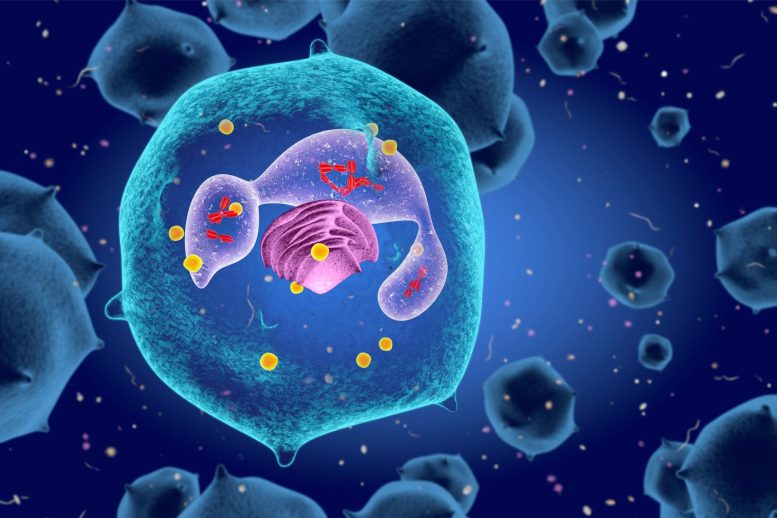Immune Cells Demonstrate Greater Independence in Recent Study

Recent studies have revealed that immune cells can traverse intricate environments on their own by actively modifying chemical cues. This breakthrough research has significant implications for the understanding of immune responses and the metastasis of cancer.
According to Jonna Alanko, a researcher associated with InFLAMES, immune cells possess a higher degree of autonomous mobility than previously understood. These cells are not merely passive recipients of chemical signals in their environment, but actually adjust these signals to deftly navigate intricate environments via self-organization.
In biology, directional cell movement is a fundamental and necessary process. It is critical for various phenomena such as individual development, reconstruction of blood vessels, and facilitating immune response.
Jonna Alanko's research focuses on the motion and navigation of immune cells inside the human body. Signaling proteins, known as chemokines, are instrumental in directing immune cells to specific locations. These chemokine gradients are similar to a-scent trail that fades the further away one gets from the source.
The conventional understanding is that immune cells identify their target by following pre-existing chemokine gradients. Contrary to this notion, cells are not passive actors merely reacting to these cues.
Through research, Alanko was able to demonstrate for the first time that immune cells can create chemokine gradients independently, enabling collective and efficient migration even in complex environments.
Immune cells are equipped with receptors, such as CCR7 found in dendritic cells, which allow them to detect chemokine signals. Dendritic cells play a vital role in the initiation of the entire immune response. They identify an infection, recognize it, and then transport the information to the lymph nodes. In these nodes, the dendritic cells interact with other immune cells to trigger a response against pathogens.
Alanko's research showed that dendritic cells not only detect a chemokine signal with their CCR7 receptor, but are also able to actively modify their chemical environment by consuming chemokines. This process allows the cells to generate local gradients that guide their own movement and that of other immune cells. The research team also found that T-cells, another type of immune cell, can benefit from these self-created gradients to improve their own directional movement.
The ability of immune cells to create their own chemokine gradients allows them to avoid obstacles in intricate environments and guide their own and other immune cells' movement. This insight not only increases our knowledge of how immune responses are coordinated within the body but could also shed light on how cancer cells guide their movement for metastasis.
The CCR7 receptor is present in many cancer types and has been observed to promote cancer metastasis. There is a possibility that cancer cells use the same mechanism as immune cells to guide their movement. The findings of this study may potentially contribute to designing new strategies to modify immune responses and target specific cancers, notes Jonna Alanko.
Jonna Alanko is a postdoctoral researcher in InFLAMES Flagship, based at the MediCity research laboratory of the Faculty of Medicine at the University of Turku in Finland. Most of her recent studies were conducted at the Institute of Science and Technology Austria (ISTA), in Austria, in a research group led by Professor Michael Sixt.




